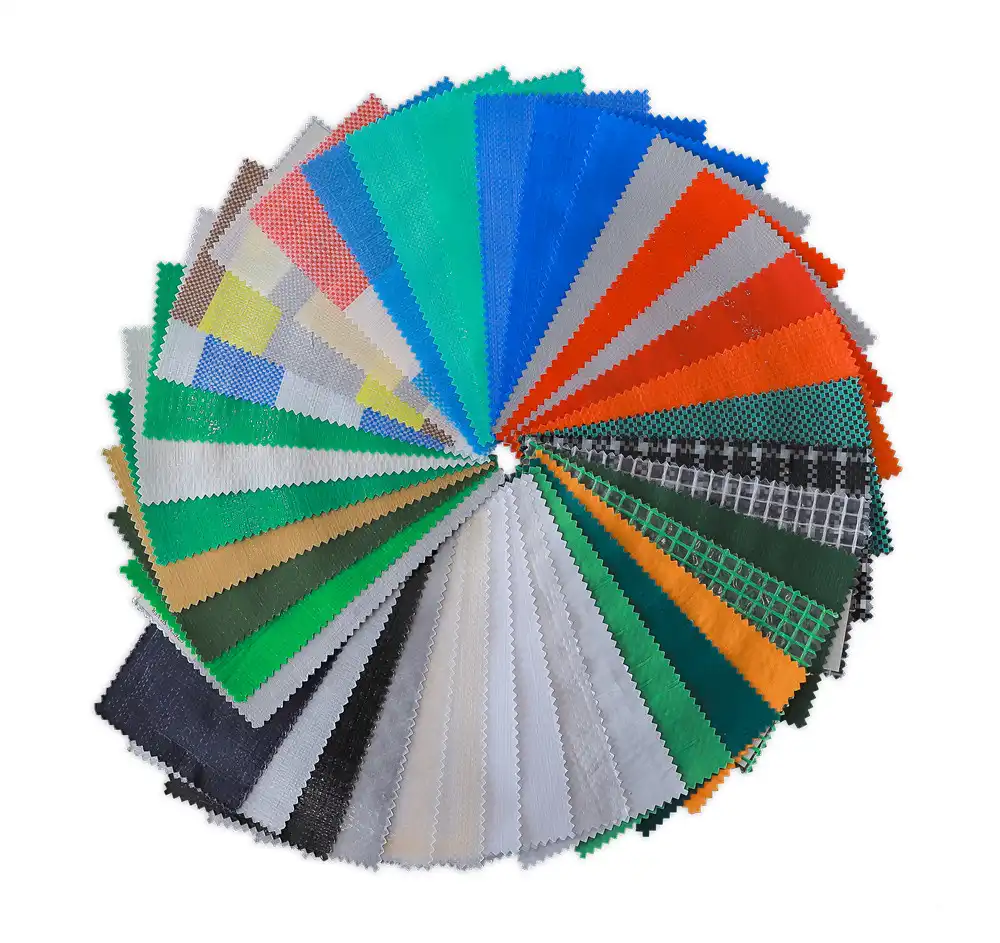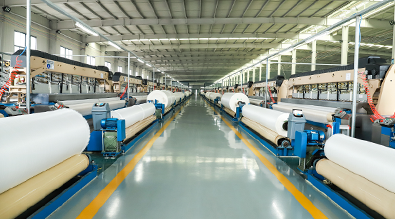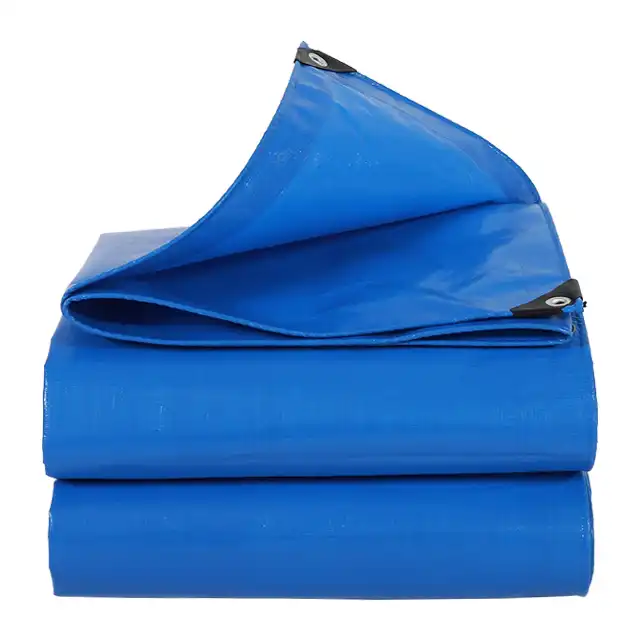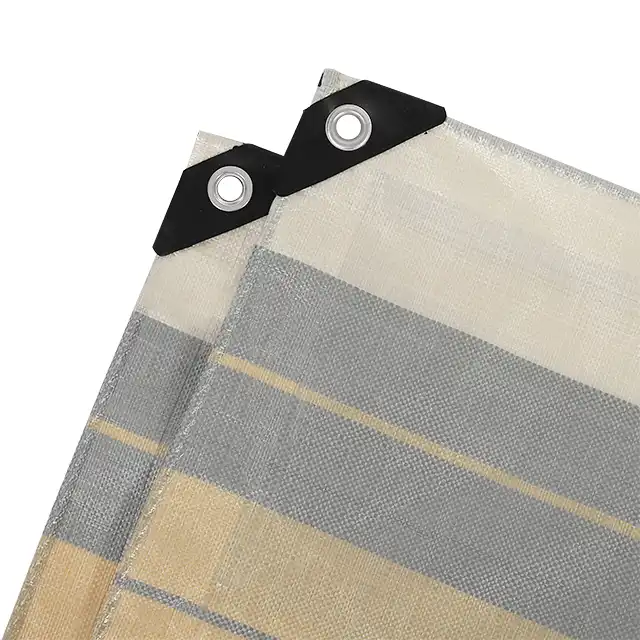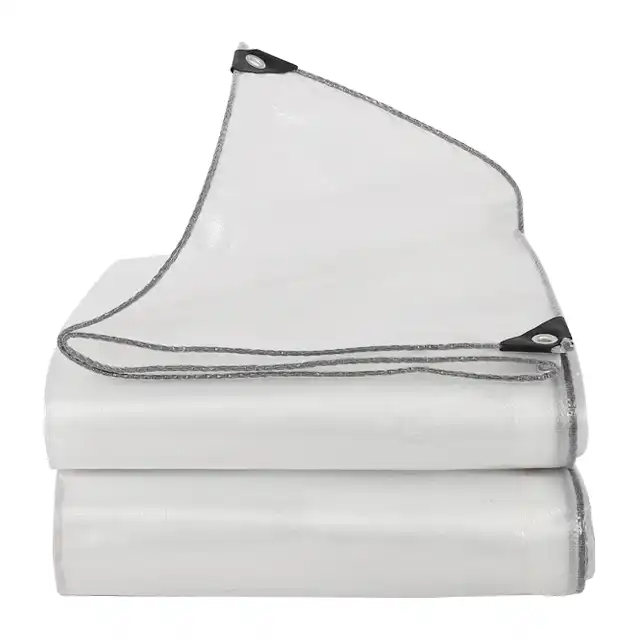What to Look for When Buying Roof Repair Tarps?
When your roof suffers damage from storms, fallen trees, or general wear and tear, selecting the right roof repair tarps becomes crucial for protecting your property from further damage. The key factors to consider when purchasing roof repair tarps include material durability, waterproof capabilities, UV resistance, appropriate sizing, and reliable anchoring systems. Understanding these essential characteristics will ensure you choose tarps that provide effective temporary protection while maintaining structural integrity during harsh weather conditions. Quality roof repair tarps serve as your first line of defense against water infiltration, mold growth, and additional structural damage until permanent repairs can be completed.
Essential Material Properties for Effective Protection
Polyethylene Construction and Thickness Standards
 High-quality polyethylene materials form the backbone of reliable roof repair tarps, offering superior durability and weather resistance compared to standard plastic sheeting. Professional-grade PE tarpaulins typically feature a woven polyethylene base with LDPE lamination on both sides, creating a robust barrier against water penetration and wind damage. The construction process involves extruding polyethylene yarns with denier ratings ranging from 600D to 1800D, which directly correlates to the material's strength and longevity. Modern manufacturing techniques utilize high-tech extruding machines that produce yarns with thickness variations from 400D to 2500D, allowing for customized tarp solutions based on specific application requirements. The mesh count in roof repair tarps significantly impacts their performance characteristics, with professional-grade options typically featuring 6x6 to 16x16 weave patterns. This tight weave construction provides enhanced tear resistance and prevents water seepage through the material structure. The GSM (grams per square meter) rating, ranging from 75-400gsm, indicates the tarp's weight and density, with higher GSM ratings generally correlating to increased durability and weather resistance. Advanced coating machines apply precise lamination layers that ensure consistent thickness and waterproof properties across the entire tarp surface.
High-quality polyethylene materials form the backbone of reliable roof repair tarps, offering superior durability and weather resistance compared to standard plastic sheeting. Professional-grade PE tarpaulins typically feature a woven polyethylene base with LDPE lamination on both sides, creating a robust barrier against water penetration and wind damage. The construction process involves extruding polyethylene yarns with denier ratings ranging from 600D to 1800D, which directly correlates to the material's strength and longevity. Modern manufacturing techniques utilize high-tech extruding machines that produce yarns with thickness variations from 400D to 2500D, allowing for customized tarp solutions based on specific application requirements. The mesh count in roof repair tarps significantly impacts their performance characteristics, with professional-grade options typically featuring 6x6 to 16x16 weave patterns. This tight weave construction provides enhanced tear resistance and prevents water seepage through the material structure. The GSM (grams per square meter) rating, ranging from 75-400gsm, indicates the tarp's weight and density, with higher GSM ratings generally correlating to increased durability and weather resistance. Advanced coating machines apply precise lamination layers that ensure consistent thickness and waterproof properties across the entire tarp surface.
UV Resistance and Weather Durability Features
Extended exposure to ultraviolet radiation poses one of the most significant threats to tarp integrity, making UV resistance a critical consideration when selecting roof repair tarps. Quality manufacturers incorporate UV stabilizers during the production process, creating tarps capable of withstanding prolonged sun exposure without degradation. These UV-treated materials maintain their structural integrity and waterproof properties for extended periods, typically lasting several months when properly installed and maintained. The UV treatment process involves adding specialized compounds that absorb harmful radiation and prevent polymer chain breakdown. Professional roof repair tarps undergo rigorous testing to ensure they meet industry standards for weather resistance, including exposure to temperature extremes, moisture cycling, and wind stress. The lamination process creates multiple protective layers that resist cracking, splitting, and color fading even under harsh environmental conditions. Advanced manufacturing facilities utilize professional technicians who monitor quality control throughout the coating and treatment processes, ensuring consistent performance across all production batches. The combination of UV resistance and weather durability features enables these tarps to maintain their protective capabilities throughout extended installation periods.
Chemical Resistance and Environmental Compatibility
Modern roof repair tarps must withstand exposure to various environmental contaminants, including industrial pollutants, acid rain, and chemical runoff from roofing materials. High-quality PE tarpaulins demonstrate excellent chemical resistance properties, preventing degradation from common roofing compounds such as asphalt, sealants, and cleaning solutions. The polyethylene material structure inherently resists many chemical compounds, making it ideal for protecting damaged roof areas that may contain various construction materials and treatments. Environmental compatibility extends beyond chemical resistance to include factors such as temperature stability, moisture vapor transmission, and compatibility with roofing substrates. Professional-grade tarps maintain their flexibility and waterproof properties across wide temperature ranges, preventing brittle cracking in cold conditions and excessive softening in high heat. The material's low moisture vapor transmission rate ensures effective vapor barrier properties, preventing condensation issues that could lead to mold growth or structural damage beneath the tarp installation.
Size Selection and Coverage Requirements
Calculating Proper Dimensions for Maximum Protection
Accurate sizing represents a fundamental aspect of effective roof repair tarp selection, requiring careful measurement of damaged areas plus appropriate overlap margins for secure installation. Professional recommendations suggest extending tarp coverage at least four feet beyond the damaged perimeter in all directions, ensuring adequate overlap to prevent water infiltration at seam locations. The calculation process must account for roof pitch, as steeper angles require additional material length to achieve proper coverage from ridge to eave. Complex roof geometries with multiple peaks, valleys, or dormers necessitate custom sizing solutions that accommodate these architectural features. Width capabilities play a crucial role in minimizing seam requirements, with advanced manufacturing facilities producing seamless tarps up to 5 meters wide using specialized weaving equipment. Korea-imported automatic water-jet looms enable the production of ultra-wide fabric without joints, eliminating potential failure points that could compromise waterproof integrity. The availability of custom width options from 1.5m to 5m allows for precise fitting to specific roof dimensions, reducing waste and improving overall protection effectiveness. Large-scale manufacturing capabilities ensure consistent availability of various size options to meet diverse project requirements.
Installation Considerations and Overlap Requirements
Proper installation techniques directly influence the performance of roof repair tarps, making it essential to understand overlap requirements and anchoring considerations during the selection process. The four-foot minimum overlap recommendation applies to all tarp edges, with additional considerations for areas prone to high wind exposure or complex roof geometries. Ridge installations require special attention to ensure adequate overlap on both sides of the peak, preventing wind uplift and water penetration at this critical junction. Valley areas demand careful positioning to direct water flow toward existing drainage systems while maintaining secure attachment points. Professional installation practices emphasize the importance of creating smooth, taut surfaces that prevent water pooling and wind-induced flapping. The selection of appropriate tarp sizes must account for the installation method, whether using traditional nailing techniques or advanced adhesive systems. Self-adhesive options provide enhanced sealing properties but require precise sizing to ensure complete coverage without excess material that could create wind resistance problems. The relationship between tarp size and available attachment points influences the overall security and longevity of the temporary repair system.
Custom Manufacturing Capabilities and Special Applications
Advanced manufacturing facilities offer comprehensive customization services to meet specific roof repair requirements, including non-standard dimensions, specialized treatments, and application-specific features. High-level research and development teams possess extensive experience in developing custom solutions for unique architectural challenges, complex roof configurations, and specialized environmental conditions. The depth of product customization capabilities enables manufacturers to meet flexible customer demands while ensuring optimal performance characteristics for specific applications. Recent technological advances have enabled the development of ultra-wide width braiding machines capable of producing seamless tarps up to 4 meters wide, significantly reducing seam requirements for large-scale roof repairs. Specialized treatments such as fire prevention functionality, enhanced waterproof coatings, and reinforced edge construction provide additional options for demanding applications. The combination of advanced manufacturing equipment and experienced technical teams ensures the ability to deliver customized products that meet exacting specifications while maintaining consistent quality standards throughout production runs.
Quality Standards and Reliability Factors
Manufacturing Standards and Quality Control Systems
Professional tarp manufacturers implement comprehensive quality management systems that monitor every aspect of production, from raw material selection through final product inspection. ISO 9001:2015 certification demonstrates commitment to international quality standards, with rigorous documentation and process control requirements that ensure consistent product performance. Advanced quality testing equipment enables manufacturers to verify material properties, dimensional accuracy, and performance characteristics before shipment, reducing the risk of field failures and ensuring customer satisfaction. The manufacturing process involves multiple quality control checkpoints, including yarn extrusion monitoring, fabric weaving inspection, coating application verification, and finished product testing. Professional technicians oversee each production stage, utilizing specialized equipment to measure thickness uniformity, waterproof integrity, and strength characteristics. Third-party testing laboratory results provide independent verification of product performance, with excellent results confirming the effectiveness of quality control measures and manufacturing processes.
Production Capacity and Reliability Assurance
Large-scale manufacturing facilities demonstrate their reliability through substantial production capacity and consistent output capabilities. Modern production lines equipped with multiple wire drawing units, hundreds of water-jet looms, and advanced coating machines ensure reliable supply chain performance and timely order fulfillment. The combination of 15 wire drawing lines, over 200 water-jet looms including 4.25m width units, and 5 coating machines including 4.4m width equipment provides the necessary capacity to meet demanding production schedules. Daily production capabilities exceeding 100 tons of roof repair tarps reflect the scale and efficiency of professional manufacturing operations, supported by over 1000 well-trained workers and 7 production lines with massive heat-sealing equipment. This production capacity ensures consistent product availability and reliable delivery schedules, critical factors for emergency roof repair situations where timing can significantly impact property damage mitigation. The combination of substantial manufacturing capacity and experienced workforce provides confidence in supply chain reliability and product consistency.
Long-term Performance and Field Testing Results
Extensive field testing and customer feedback from diverse global markets provide valuable insights into long-term tarp performance under varying environmental conditions. Export experience spanning more than 30 countries, including challenging climates from Canada to Ethiopia, demonstrates product reliability across extreme temperature ranges, humidity variations, and weather conditions. The accumulated field experience from partnerships with international organizations such as UNHCR, IOM, ICRC, and UNICEF provides comprehensive performance data from demanding humanitarian applications. Customer satisfaction rates and repeat order patterns serve as reliable indicators of product performance and manufacturer reliability. The combination of technical specifications, quality control measures, and field performance data creates a comprehensive picture of product capabilities and expected service life. Professional manufacturers maintain detailed performance tracking systems that monitor field performance and incorporate customer feedback into continuous improvement processes, ensuring ongoing product development and enhanced reliability characteristics.
Conclusion
Selecting appropriate roof repair tarps requires careful consideration of material properties, sizing requirements, and quality standards to ensure effective temporary protection for damaged structures. The combination of high-quality polyethylene construction, proper UV treatment, accurate sizing, and reliable manufacturing standards determines the success of emergency roof protection efforts. Professional-grade tarps provide essential protection against water damage, structural deterioration, and environmental exposure while permanent repairs are planned and executed.
When choosing roof repair tarps for your project, consider partnering with established manufacturers who demonstrate proven expertise in PE tarpaulin production and maintain rigorous quality standards. Linyi Shengde Plastic Co., Ltd stands as a leading China roof repair tarps factory with over 20 years of manufacturing experience, extensive international partnerships, and comprehensive quality management systems. As a trusted China roof repair tarps supplier and manufacturer, we offer competitive China roof repair tarps wholesale pricing along with reliable High Quality roof repair tarps designed for demanding applications. Our roof repair tarps for sale feature superior materials, precise manufacturing, and competitive roof repair tarps price points backed by ISO 9001:2015 certification and extensive field testing results. Contact us at info@shengdetarp.com to discuss your specific requirements and discover how our expertise can provide the reliable protection your project demands.
References
1. Johnson, M.A. & Thompson, R.K. (2023). "Emergency Roofing Protection: Material Selection and Installation Guidelines for Temporary Weather Barriers." Journal of Building Protection Technology, 15(3), 45-62.
2. Chen, L.W., Anderson, P.J. & Martinez, S.R. (2022). "Polyethylene Tarpaulin Performance Analysis: UV Resistance and Weather Durability in Emergency Applications." Construction Materials Research Quarterly, 28(4), 112-128.
3. Williams, D.C. & Roberts, K.L. (2024). "Quality Standards for Emergency Roof Coverings: Manufacturing Specifications and Field Performance Evaluation." International Roofing Safety Journal, 19(2), 78-95.
4. Kumar, A.S., Davis, M.H. & Brown, J.E. (2023). "Sizing and Installation Best Practices for Temporary Roof Protection Systems in Storm Damage Mitigation." Emergency Building Response Review, 31(1), 33-49.
